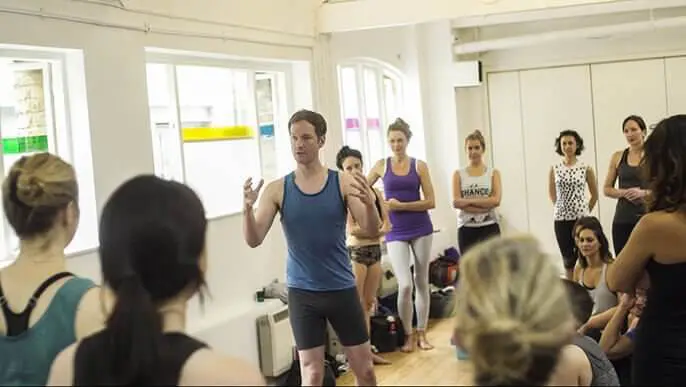Before you read this post, I encourage you to listen to Episode 3 of Andrea’s podcast! In the episode I expand on the ideas presented here, plus you’ll get to hear my opinion on the concept of “yogalebrity.”
Like all livelihoods, teaching yoga comes with challenges that can lead to burnout if they’re not managed. Here are five essential tips to help you manage the stresses of teaching yoga so that you can savor your career and guide your students without crashing and burning.
See also What to Look for in a 200-Hour Yoga Teacher Training
1. Adjust Your Expectations
Teaching yoga is a soulful, satisfying job, but it’s not for the faint of heart. You’ll go through significant financial ups and downs. You’ll have your ego over-inflated one day and raked through the coals the next day. And, you’ll probably work more hours than you think. This isn’t to dissuade you from being a teacher. It’s to help you have clear expectations about the livelihood you’ve chosen. When your expectations are in-line with the reality of teaching yoga, you’re much more likely to be happy and satisfied as a teacher.
2.Consider Why You Want To Teach
Teaching yoga and practicing yoga are not the same thing. Most of us start teaching yoga because we love practicing yoga. But, eating food is not the same experience as cooking food — or running a restaurant. If you want to teach yoga — especially if you want to teach yoga full-time and support yourself or your family — you’ll need to love teaching yoga, not just practicing yoga. You’ll need to love the subject matter of yoga, the experience of running a small business, and the process of engaging with students and community.
3. Try to Work Efficiently
Inefficient teaching schedules are one of the biggest sources of burnout in our livelihood. Simply put, most teachers are spread too thin. Most teachers only teach a couple of classes per day, but they’re almost never back-to-back. You might teach a class in the morning followed by one several hours later in the afternoon or evening. This type of schedule makes it hard to get things done or fully relax. This leads to a feeling of always “being on.”
One way to counter this is to teach more back-to-back hours. This might mean scheduling a few private clients at the studio before or after your class. Another effective strategy is to start teaching a series or two per quarter — or occasional workshops — in order to earn enough that you can let go of a class or two in your schedule that is stretching you too thin.
4. Find a Mentor
Everyone needs to know that they’re not alone. And, in fact, you’re not alone. Every yoga teacher experiences the same range of emotions, challenges, and joys at some point in their career. Some teachers are further ahead of you on the path just as you might be further ahead on the path than others. One of the most important ways to stay inspired, focused, and grounded is to develop a professional relationship with a more seasoned teacher. Receiving a mentor’s guidance and support will help you stay connected to your practice and your teaching for many, many years.
5. Remember That Social Media Is Not Real Life
Social media is not real life. This isn’t to say that it’s fake, unreal or insincere. It’s simply to say that social media does not reflect the totality of people’s lives. It’s a curated slice of life that skews toward the more exciting and appealing events that people experience. Personally, I think this makes sense. That said, it’s important that we remember these dynamics so that we don’t feel like we’re being left behind or failing when we see other people’s big classes or beautiful postures. Every well-known teacher has small classes sometimes, and they have postures that don’t feel good or balanced in their body. Everyone. Even more, life is more than big classes and awesome poses. So, be sure that you take what you see in social media in stride. Accept it (and maybe even appreciate it for what it is) without letting it drive you crazy.



